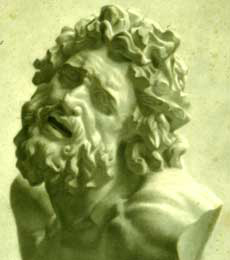The scene of Laocoon’s death by savage snakes is a powerful passage from Book II of the Aeneid.
In ancient times, people worshipped several different gods rather than a single god, believing that each god or goddess had control over a certain aspect of life. Laocoon was the chief priest of Neptune in Troy, and so had devoted his life to praising the power that Neptune held over the sea and its bounty. Troy was said to have been a very wealthy nation, located on a strategic trading route at the Dardanelles near Gallipoli. Laocoon was a particularly important figure in Trojan society because his temple to Neptune was seen as bringing the city prosperity.

